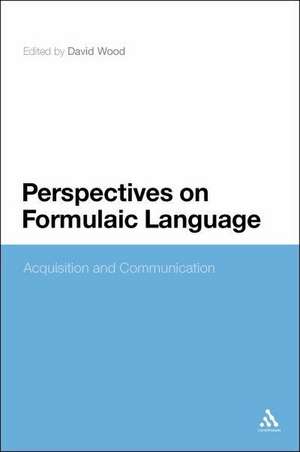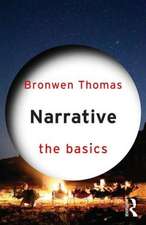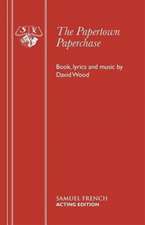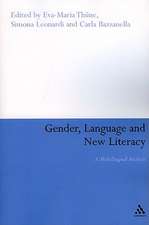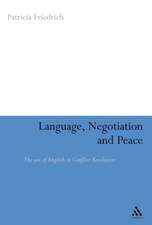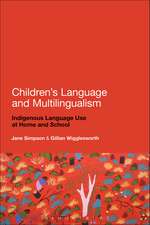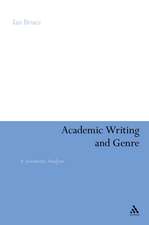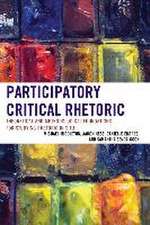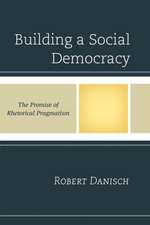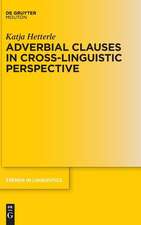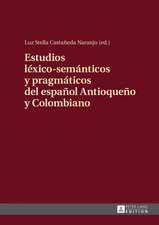Perspectives on Formulaic Language: Acquisition and Communication
Editat de David Wooden Limba Engleză Hardback – 10 feb 2010
Formulaic sequences are more or less fixed word combinations such as idioms, collocations, lexical bundles, phrasal verbs and so on. Study in this area has grown over the past fifteen years, despite the fact that there are no academic journals or conferences devoted to this topic.
This edited collection is an attempt to draw together the diverse international work on formulaic language. It features an introduction by Dr. Regina Weinert, a pioneer and expert in the study of formulaic language in acquisition. The authors have an international scope, from China and Italy to Armenia, Canada and Britain. The book is divided into three sections: Formulaic Language in Acquisition and Pedagogy; Identification and Psycholinguistic Processing of Formulaic Language; Communicative Functions of Formulaic Language. The topics of the papers are as varied as the geographic locations of the authors - critical discourse analysis, psycholinguistics, memorization, corpus analysis, specific languages such as Arabic, and even Beowulf and blogging language. This volume represents a step forward for the study of formulaic language, offering diverse, often previously unexplored perspectives from international researchers, advancing knowledge in innovative ways. It makes a fresh contribution the growing number of works on this topic and will appeal to researchers and academics working with formulaic language throughout linguistics.| Toate formatele și edițiile | Preț | Express |
|---|---|---|
| Paperback (1) | 258.69 lei 6-8 săpt. | |
| Bloomsbury Publishing – 2 noi 2011 | 258.69 lei 6-8 săpt. | |
| Hardback (1) | 1007.20 lei 6-8 săpt. | |
| Bloomsbury Publishing – 10 feb 2010 | 1007.20 lei 6-8 săpt. |
Preț: 1007.20 lei
Preț vechi: 1451.82 lei
-31% Nou
Puncte Express: 1511
Preț estimativ în valută:
192.75€ • 200.49$ • 159.13£
192.75€ • 200.49$ • 159.13£
Carte tipărită la comandă
Livrare economică 15-29 aprilie
Preluare comenzi: 021 569.72.76
Specificații
ISBN-13: 9781441150479
ISBN-10: 1441150471
Pagini: 298
Dimensiuni: 156 x 234 x 23 mm
Greutate: 0.5 kg
Editura: Bloomsbury Publishing
Colecția Continuum
Locul publicării:London, United Kingdom
ISBN-10: 1441150471
Pagini: 298
Dimensiuni: 156 x 234 x 23 mm
Greutate: 0.5 kg
Editura: Bloomsbury Publishing
Colecția Continuum
Locul publicării:London, United Kingdom
Descriere
Formulaic sequences are more or less fixed word combinations such as idioms, collocations, lexical bundles, and phrasal verbs. This title draws together diverse international work on formulaic language such as idioms, collocations, lexical bundles and phrasal verbs.
Caracteristici
Features
empirical
research
alongside
theory
and
teaching
practices
--
will
help
readers
to
understand
the
pervasive
and
critical
role
that
formulaic
language
plays
in
all
aspects
of
language
acquisition
and
use.
Notă biografică
David
Wood
teaches
applied
linguistics
at
Carleton
University,
Canada,
where
his
research
interests
lie
in
formulaic
language,
acquisition
of
L2
spoken
language
and
academic
discourse,
and
language
teacher
education.
He
has
taught
English
language
and
applied
linguistics
in
Canada,
Greece,
and
Japan.
Cuprins
1.
The
contribution
of
formulaic
language
to
fundamental
debates
in
linguisticsn,
Regina
Weinert
(University
of
Sheffield)
Part 1: Formulaic Language in Acquisition and Pedagogy
2. The development of collocation use in academic texts by advanced L2 learners: A multiple case study approach, Jie Li and Norbert Schmitt (University of Nottingham, UK)
3. Idiomatically speaking: Effects of task variation on formulaic language in highly proficient users of L2 French and Spanish, Fanny Forsberg and Lars Fant (Stockholm University, Sweden)
4. Effectiveness of text memorization in EFL Learning of Chinese students, Zhenqiong Dai and Yanren Ding (Nanjing University, China)
5. Lexical clusters in an EAP textbook corpus, David Wood (Carleton University, Canada)
6. An investigation of lexical bundles in ESP textbooks and electrical engineering introductory textbooks, Lin Chen (Carleton University, USA)
Part 2: Identification and Psycholinguistic Processing of Formulaic Language
7. Formulaicity in code-switching: Criteria for identifying formulaic sequences, Kazuhiko Namba (Kyoto Sangyo University, Japan)
8. Holistic processing of regular four-word sequences: A behavioral and ERP study of the effects of structure, frequency, and probability on immediate recall, Antoine Tremblay and Harald Baayen (University of Alberta, Canada) 9. The phonology of formulaic sequences: A review, Phoebe Ming Sum Lin (University of Nottingham, UK)
10. Processing MWUs: Are MWU subtypes psycholinguistically real? Georgie Columbus (University of Alberta, Canada)
Part 3: Communicative Functions of Formulaic Language
11. A text in speech's clothing: Discovering specific functions of formulaic expressions in Beowulf and blogs, Matt Garley, Benjamin Slade, and Marina Terkourafi (University of Illinois at Urbana-Champaign, USA)
12. The semantic structure of Arabic idioms, Ashraf Abdou(University of Manchester, UK)
13. Formulaicity and translation: A cross-corpora analysis of English formulaic binomials and their Italian translations, Salvatore Giammarresi (University of Palermo, Italy)
Part 1: Formulaic Language in Acquisition and Pedagogy
2. The development of collocation use in academic texts by advanced L2 learners: A multiple case study approach, Jie Li and Norbert Schmitt (University of Nottingham, UK)
3. Idiomatically speaking: Effects of task variation on formulaic language in highly proficient users of L2 French and Spanish, Fanny Forsberg and Lars Fant (Stockholm University, Sweden)
4. Effectiveness of text memorization in EFL Learning of Chinese students, Zhenqiong Dai and Yanren Ding (Nanjing University, China)
5. Lexical clusters in an EAP textbook corpus, David Wood (Carleton University, Canada)
6. An investigation of lexical bundles in ESP textbooks and electrical engineering introductory textbooks, Lin Chen (Carleton University, USA)
Part 2: Identification and Psycholinguistic Processing of Formulaic Language
7. Formulaicity in code-switching: Criteria for identifying formulaic sequences, Kazuhiko Namba (Kyoto Sangyo University, Japan)
8. Holistic processing of regular four-word sequences: A behavioral and ERP study of the effects of structure, frequency, and probability on immediate recall, Antoine Tremblay and Harald Baayen (University of Alberta, Canada) 9. The phonology of formulaic sequences: A review, Phoebe Ming Sum Lin (University of Nottingham, UK)
10. Processing MWUs: Are MWU subtypes psycholinguistically real? Georgie Columbus (University of Alberta, Canada)
Part 3: Communicative Functions of Formulaic Language
11. A text in speech's clothing: Discovering specific functions of formulaic expressions in Beowulf and blogs, Matt Garley, Benjamin Slade, and Marina Terkourafi (University of Illinois at Urbana-Champaign, USA)
12. The semantic structure of Arabic idioms, Ashraf Abdou(University of Manchester, UK)
13. Formulaicity and translation: A cross-corpora analysis of English formulaic binomials and their Italian translations, Salvatore Giammarresi (University of Palermo, Italy)
Index
Recenzii
"The
new
millennium
has
seen
an
explosion
of
usage-based
studies
showing
that
formulaic
language
and
constructions
are
the
rule
rather
than
the
exception.
This
volume
is
an
important
contribution
to
this
growing
field
of
research,
directing
the
reader,
as
it
does,
to
an
abundance
of
new
prefabricated
patterns
and
sequences
of
different
degrees
of
generality,
from
abstract
schemas
over
frames
to
(semi)fixed
sequences,
and
in
a
wide
range
of
applicational
studies
including
memorization
and
processing,
developmental
L2
learning
and
textbook
design."
